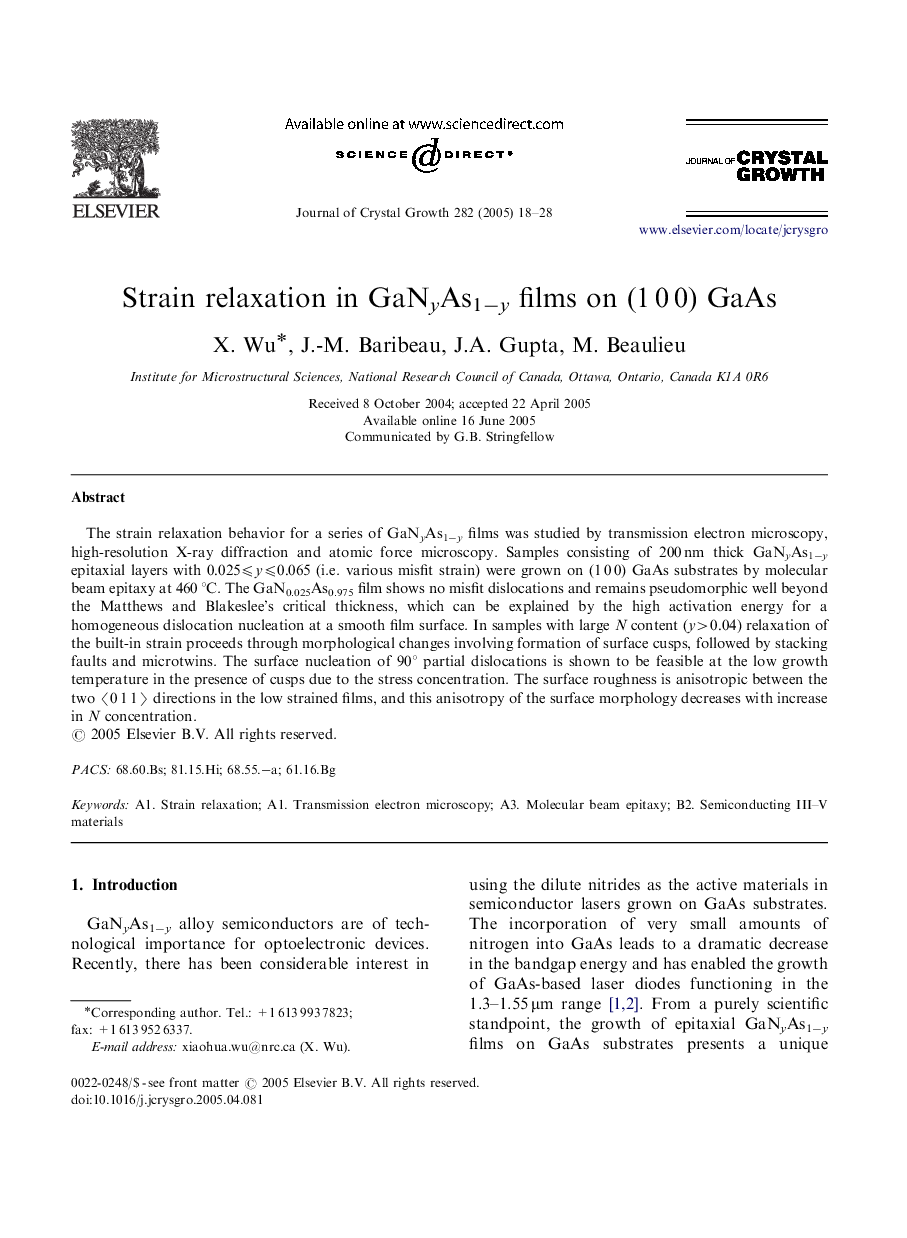| Article ID | Journal | Published Year | Pages | File Type |
|---|---|---|---|---|
| 9829504 | Journal of Crystal Growth | 2005 | 11 Pages |
Abstract
The strain relaxation behavior for a series of GaNyAs1ây films was studied by transmission electron microscopy, high-resolution X-ray diffraction and atomic force microscopy. Samples consisting of 200 nm thick GaNyAs1ây epitaxial layers with 0.025⩽y⩽0.065 (i.e. various misfit strain) were grown on (1 0 0) GaAs substrates by molecular beam epitaxy at 460 °C. The GaN0.025As0.975 film shows no misfit dislocations and remains pseudomorphic well beyond the Matthews and Blakeslee's critical thickness, which can be explained by the high activation energy for a homogeneous dislocation nucleation at a smooth film surface. In samples with large N content (y>0.04) relaxation of the built-in strain proceeds through morphological changes involving formation of surface cusps, followed by stacking faults and microtwins. The surface nucleation of 90° partial dislocations is shown to be feasible at the low growth temperature in the presence of cusps due to the stress concentration. The surface roughness is anisotropic between the two ã0 1 1ã directions in the low strained films, and this anisotropy of the surface morphology decreases with increase in N concentration.
Keywords
Related Topics
Physical Sciences and Engineering
Physics and Astronomy
Condensed Matter Physics
Authors
X. Wu, J.-M. Baribeau, J.A. Gupta, M. Beaulieu,
